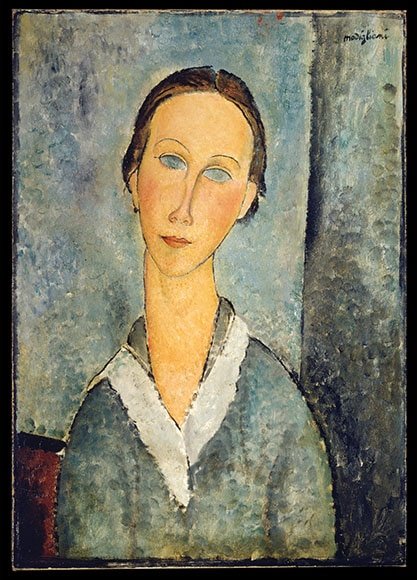A look at Portraiture
At Mon Studio Art, we will be beginning out Fall season creating fun portraits with a twist from art history during our Term art classes. So, it seemed fitting to write a blog post looking back at the history and impact of portrature in art.
The act of depicting individuals, has been a fundamental aspect of artistic expression since ancient times. Before the invention of photography, portraiture served various purposes and evolved alongside societal changes, reflecting cultural, political, and technological advancements throughout history.
In the ancient world, portraiture played a significant role in commemorating rulers, gods, and important figures. From the lifelike sculptures of pharaohs in ancient Egypt to the realistic busts of Roman emperors, portraiture served as a means of immortalizing individuals and asserting power and authority.
Leonardo Da Vinci, Self Portrait.
During the Renaissance in Europe, portraiture experienced a resurgence, fueled by a growing interest in humanism and individualism. Artists such as Leonardo da Vinci, Raphael, and Hans Holbein the Younger produced striking portraits that captured not only the physical likeness of their subjects but also their inner emotions and personalities. Portraits became prized possessions among the wealthy elite, serving as symbols of status and prestige.
The Baroque period saw further innovation in portraiture, with artists like Rembrandt van Rijn and Diego Velázquez employing dramatic lighting and psychological insight to create compelling character studies. Portraits became more intimate and expressive, revealing the complexities of human nature.
During the 18th and 19th centuries, the rise of the bourgeoisie led to a democratization of portraiture. No longer confined to the aristocracy, portraits became accessible to a wider range of individuals, including merchants, professionals, and middle-class families. Artists like Joshua Reynolds and John Singer Sargent catered to this growing demand, producing elegant portraits that captured the aspirations and values of their sitters.
Self-Portrait as the Allegory of Painting,
also known as Autoritratto in veste di Pittura or simply La Pittura
With the advent of photography in the 19th century, portraiture underwent a transformation. While painting remained a preferred medium for commissioned portraits among the elite, photography offered a more affordable and accessible alternative for the masses. Photographers such as Nadar, Julia Margaret Cameron, and Richard Avedon pushed the boundaries of portraiture, experimenting with different techniques and styles to convey personality and emotion.
Despite the rise of photography, painting continues to be a vital medium for portraiture in the contemporary art world. Artists like Chuck Close, Kehinde Wiley, and Jenny Saville challenge traditional notions of portraiture, exploring issues of identity, representation, and power. Whether rendered in paint, sculpture, or pixels, portraits continue to captivate viewers and provide insights into the human experience, reminding us of the enduring importance of portraiture in the history of art.
Exploring Portraiture Beyond Western Traditions
While the overview primarily focuses on European and Western traditions of portraiture, it's important to note that this art form has flourished in diverse cultures around the world. Ancient civilizations in India, China, and the Middle East also developed rich traditions of portraiture, each with its own unique styles and cultural influences.
In India, for example, portraits of rulers and nobility were commonly depicted in miniature paintings, showcasing intricate details and vibrant colors. These portraits served not only as artistic expressions but also as symbols of power and authority in Indian society.
Likewise, in China, portraiture has a long history dating back to the Han Dynasty, where portraits of emperors and officials were created using various mediums such as ink and paint on silk or paper scrolls. These portraits were often imbued with symbolism and conveyed the virtues and ideals of Confucian philosophy.
In the Middle East, particularly in Islamic art, portraiture took on a unique form, often featuring calligraphy and geometric patterns alongside depictions of individuals. Portraits in Islamic art were less concerned with capturing physical likeness and more focused on conveying spiritual or symbolic meanings.
Portraiture in the Digital Age
In today's digital age, portraiture continues to evolve, embracing new technologies and mediums to explore themes of identity, representation, and self-expression. Social media platforms like Instagram and Facebook have democratized portraiture, allowing individuals to curate and share their own self-portraits with the world.
Furthermore, advancements in digital art and virtual reality have opened up new possibilities for artists to create immersive and interactive portraits that challenge traditional notions of representation. Artists like JR and Ai Weiwei have used technology to create large-scale installations and digital portraits that engage viewers in thought-provoking ways.
The evolution of portraiture reflects not only changes in artistic styles and techniques but also shifts in societal values and cultural perspectives. From ancient sculptures to contemporary digital art, portraiture continues to captivate audiences and provide insights into the diverse and complex nature of humanity. Now let us see how this genre can influence the artists of Mon Studio today. Keep in touch by following us on Instagram @monstudio.art or sign up for our newsletter to keep up to date on all the exciting events happening.
Let end this post with a big question!! What is your favourite portrait from history?




















